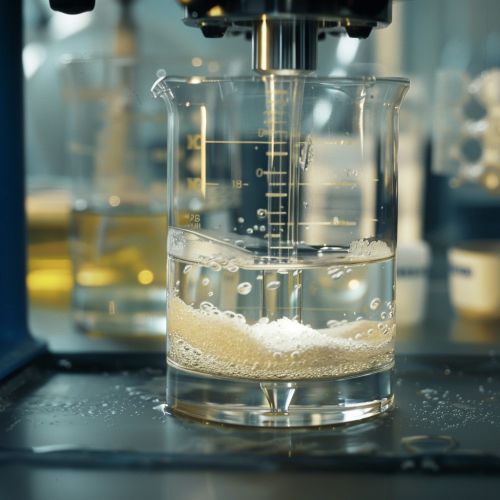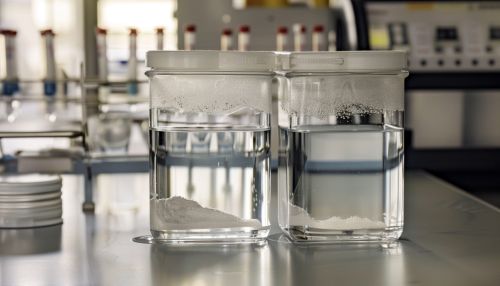Brust-Schiffrin method
Overview
The Brust-Schiffrin method is a synthetic procedure used in the creation of monolayer protected clusters (MPCs) of gold and silver. Named after its developers, Michael Brust and Charles J. Schiffrin, this method is widely recognized for its simplicity, versatility, and the high quality of nanoparticles it produces.
Methodology
The Brust-Schiffrin method involves two main steps: the reduction of metal salts and the capping of the resulting metal nanoparticles with thiolate ligands. The process begins with the reduction of a metal salt, typically a gold or silver salt, in the presence of a thiol. This is usually done in a two-phase system with water and toluene. The metal salt is dissolved in the water phase, while the thiol is dissolved in the toluene phase. The reduction is facilitated by a reducing agent, such as sodium borohydride, which is also dissolved in the water phase.


Upon addition of the reducing agent, the metal ions are reduced to metal atoms, which then nucleate to form metal nanoparticles. The thiol molecules in the toluene phase then cap these nanoparticles, forming a protective monolayer around them. This capping prevents the nanoparticles from aggregating, thus stabilizing them and allowing for the formation of MPCs.
Applications
The Brust-Schiffrin method has found wide applications in various fields, including materials science, chemistry, and nanotechnology. The nanoparticles produced by this method can be used in the fabrication of nanomaterials and nanostructures, as well as in the development of nanomedicines and nanoelectronics.
The method's simplicity and versatility also make it a popular choice for the synthesis of nanoparticles in research and industrial settings. By varying the type of thiol used, the size and properties of the resulting nanoparticles can be finely tuned, allowing for the creation of a wide range of MPCs with different characteristics.
Limitations and Modifications
While the Brust-Schiffrin method is highly effective, it does have some limitations. For instance, it is primarily used for the synthesis of gold and silver nanoparticles, and may not be suitable for other types of metals. Additionally, the method typically produces nanoparticles with a relatively narrow size distribution, which may not be ideal for certain applications.
Over the years, several modifications have been made to the original Brust-Schiffrin method to overcome these limitations. These include the use of different reducing agents, the incorporation of additional stabilizing agents, and the application of various post-synthesis treatments. These modifications have expanded the versatility of the method and have further broadened its applicability.
